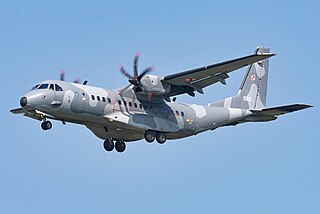Related Research Articles
Air Canada is the flag carrier and the largest airline of Canada, by size and passengers carried. Air Canada is headquartered in the borough of Saint-Laurent, Montreal, Quebec. The airline, founded in 1937, provides scheduled and charter air transport for passengers and cargo to 222 destinations worldwide. It is a founding member of the Star Alliance. Air Canada's major hubs are at Toronto Pearson International Airport (YYZ), Montréal–Trudeau International Airport (YUL), and Vancouver International Airport (YVR).

Tim Hortons Inc., known colloquially as Tim's, Timmies, or Timmy's, is a Canadian multinational coffeehouse and restaurant chain with headquarters in Toronto; it serves coffee, donuts, sandwiches, breakfast egg muffins and other fast-food items. It is Canada's largest quick-service restaurant chain, with 5,701 restaurants in 13 countries, as of September 2023.

Wendy Mesley is a Canadian television journalist, podcaster, and blogger. She worked for CBC News from 1981 to 2021 in roles including national correspondent at the Quebec Legislature and the Ottawa Parliamentary Bureau. She was the anchor of The National, host of Undercurrents, Disclosure, and Marketplace, and from 2018 to 2020, she hosted the Sunday morning talk show The Weekly with Wendy Mesley.
Robert Rex Rafael Murphy was a Canadian commentator and author, primarily on Canadian political and social matters. He was the regular host of CBC Radio One's Cross Country Checkup, a nationwide call-in show, for 21 years before stepping down in September 2015. He wrote for the National Post and had a YouTube channel called RexTV.

Wendy Jane Crewson is a Canadian actress and producer. She began her career appearing on Canadian television, before her breakthrough role in 1991 dramatic film The Doctor.

The Bell CH-146 Griffon is a multi-role utility helicopter designed by Bell Helicopter Textron as a variant of the Bell 412EP for the Canadian Armed Forces. It is used in a wide variety of roles, including aerial firepower, reconnaissance, search and rescue and aero-mobility tasks. The CH-146 has a crew of three, can carry up to ten troops and has a cruising speed of 220–260 km/h.

A stretcher, gurney, litter, or pram is an apparatus used for moving patients who require medical care. A basic type must be carried by two or more people. A wheeled stretcher is often equipped with variable height frames, wheels, tracks, or skids.
The National is a Canadian national television news program which serves as the flagship broadcast for the English-language news division of CBC News by the Canadian Broadcasting Corporation. It reports on major Canadian and international news stories, airing on CBC Television stations nationwide Sunday to Friday at 10:00 p.m. local time.

The Greatest Canadian is a 2004 television series consisting of 13 episodes produced by the Canadian Broadcasting Corporation (CBC) to identify one greatest Canadian of all time, according to those who watched and participated in the program.

The scoop stretcher is a device used specifically for moving injured people. It is ideal for carrying casualties with possible spinal injuries.

The Transportation Safety Board of Canada, officially the Canadian Transportation Accident Investigation and Safety Board is the agency of the Government of Canada responsible for advancing transportation safety in Canada. It is accountable to Parliament directly through the President of the King’s Privy Council and the Minister of Intergovernmental and Northern Affairs and Internal Trade. The independent agency investigates accidents and makes safety recommendations in four modes of transportation: aviation, rail, marine and pipelines.
Rogers Media Inc., operating as Rogers Sports & Media, is a Canadian subsidiary of Rogers Communications that owns the company's mass media and sports properties.

A baby walker is a device that can be used by infants who cannot walk on their own to move from one place to another. Modern baby walkers are also for toddlers. They have a base made of hard plastic sitting on top of wheels and a suspended fabric seat with two leg holes. In the US, baby walkers are responsible for about 2000 injuries annually to children serious enough to require a trip to the emergency room, prompting calls from pediatricians for their outright ban.
The Greatest Canadian Invention is a spiritual sequel to The Greatest Canadian originally aired on CBC Television. It began with CBC viewers voting online on which invention they considered to be the greatest Canadian invention. The show is a two-hour special, hosted by Bob McDonald, that premiered on 3 January 2007 at 8:00 EST.

The Airbus C295 is a medium tactical transport aircraft that was designed and initially manufactured by the Spanish aerospace company CASA, which is now part of the European multinational Airbus Defence and Space division.

A hyperbaric stretcher is a lightweight pressure vessel for human occupancy (PVHO) designed to accommodate one person undergoing initial hyperbaric treatment during or while awaiting transport or transfer to a treatment chamber.
How to Buy a Baby is a Canadian comedy web series, which premiered in November 2017 on the Canadian Broadcasting Corporation's web platform and on YouTube. Created by Wendy Litner and based on her own experiences having to pursue fertility treatment to conceive a pregnancy, the series stars Meghan Heffern and Marc Bendavid as Jane and Charlie, a couple going through the fertility treatment process.

The second season of Schitt's Creek a Canadian television sitcom created by Daniel Levy and father Eugene Levy premiered on January 12, 2016, and concluded on March 29, 2016, on CBC Television. The season aired 13 episodes and saw the return of the characters Johnny Rose, Moira Rose, David Rose & Alexis Rose. The season was once again produced by Not a Real Company Productions.
References
- 1 2 3 Star, Sarah Barmak (2014-05-10). "10 Mothers of Invention". Toronto Star. Retrieved 2024-08-21.
- ↑ "Inventive Women Biographies: Wendy Murphy". Archived from the original on 2007-08-12. Retrieved 2007-12-20.
- ↑ "Weevac 6 Infant Evacuation Stretcher". Mobile Medical Systems. Retrieved 2024-08-21.